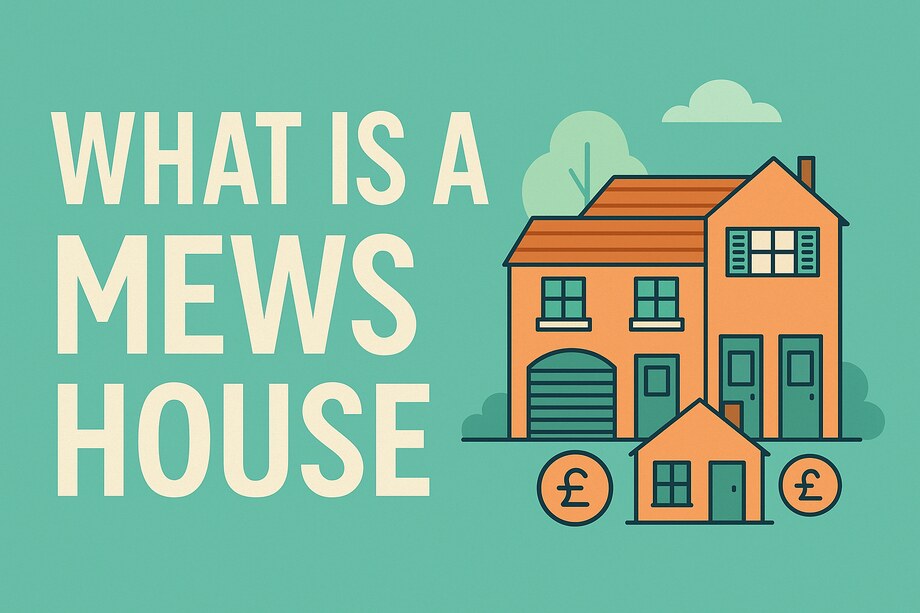What is a Mews House – The Complete Buyer’s Guide

Mews houses represent London’s most enchanting and coveted residential properties, offering peaceful sanctuaries within the capital’s bustling urban landscape. Wander through prestigious neighborhoods like Belgravia, Kensington, Mayfair, or Marylebone, and you’ll discover these characterful homes tucked away along charming cobblestone lanes.
For prospective buyers considering a London mews house purchase, understanding the unique features, potential constraints, and market dynamics proves essential before committing to this distinctive property type. This comprehensive guide explores everything that makes mews houses special and how these characteristics could influence your ownership experience.
Understanding Mews Houses: Definition and Characteristics
A mews house represents a converted historical building originally constructed during the 18th and 19th centuries as service accommodation for London’s wealthy elite. These distinctive properties began life as stable blocks and carriage houses, typically featuring ground-floor facilities for horses and coaches, with modest living quarters for grooms, coachmen, and stable workers situated above.
These functional buildings were strategically positioned along narrow service lanes behind grand Georgian and Victorian mansions, creating intimate working communities that supported the transportation and domestic needs of affluent households. The characteristic wide doorways, originally designed for horse-drawn vehicles, have since been converted into residential entrances or retained as unique architectural features.
Modern mews houses preserve their original compact scale and distinctive character while offering contemporary living standards. The narrow cobblestone streets, absence of traditional pavements, and intimate building proportions create an almost village-like atmosphere within central London’s urban environment, making these properties uniquely appealing to discerning buyers.
The Historical Origins of Mews Properties
The term “mews” carries fascinating historical connections to royal traditions and urban development patterns. Originally, a mews described the Royal Mews near Charing Cross in London, where the monarch’s hunting falcons were housed during their annual moulting period. The word derives from the French verb “muer,” meaning to moult or shed feathers.
When King Henry VIII transformed the royal hawk houses into stables for horses in the 16th century, the name “mews” transferred to these new equestrian facilities. As London expanded westward during the Georgian era, property developers adopted this terminology for similar stable complexes built to serve the grand terraced houses being constructed in areas like Mayfair, Kensington, and Marylebone.
The practical necessity of housing horses, carriages, and domestic staff near wealthy residences drove the creation of these service streets. Many featured underground tunnels connecting the mews buildings to the basements of the main houses, allowing servants to move discreetly without disturbing their employers. Intriguingly, most mews houses were built without rear windows to prevent staff from observing the private garden activities of the families they served.
Why Mews Houses Captivate Modern Buyers
Contemporary mews houses appeal to buyers seeking an exceptional balance between urban convenience and residential tranquility. These properties offer car-free environments and close-knit community atmospheres while maintaining prime central London locations within walking distance of world-class amenities.
The architectural heritage and authentic period features attract those who appreciate living in historically significant properties with genuine character. Many mews streets retain their original cobblestones and impressive archway entrances, creating photogenic environments that feel distinctly separate from London’s busy main thoroughfares.
Professional couples, families with children, and pet owners particularly value the safe, pedestrian-friendly environment that mews streets provide. The combination of privacy, security, and community spirit creates an appealing lifestyle that bridges the gap between apartment living and traditional house ownership.
Architectural Diversity in Mews Properties
Modern mews houses showcase remarkable variety in size, layout, and design philosophy, reflecting different conversion approaches and renovation standards over decades of residential development.
Traditional Heritage Conversions
These properties maintain authentic historical elements including original stable doors, exposed brick walls, wooden ceiling beams, and period ironwork. Many preserve the characteristic two or three-story layout with compact but efficiently designed living spaces that respect the buildings’ functional origins.
Contemporary Luxury Transformations
High-end renovations completely reimagine mews houses as modern luxury homes, incorporating glass extensions, roof terraces, basement developments, and open-plan interiors. These conversions maximize natural light through strategic window placement and often create impressive double-height spaces within the original structural constraints.
New Build Mews Developments
Modern mews-style developments echo traditional architectural cues while providing contemporary amenities like underfloor heating, smart home technology, and energy-efficient construction. These properties offer the mews lifestyle experience without the maintenance concerns associated with period buildings.
Property sizes range from intimate one-bedroom homes perfect for professionals or couples, to substantial family houses with four or more bedrooms created through creative space utilization, basement conversions, and sometimes combining adjacent buildings.
Modern Mews House Features and Amenities
Twenty-first-century mews houses successfully blend historical authenticity with cutting-edge contemporary features. Popular renovation approaches include installing floor-to-ceiling windows, creating roof gardens or terraces, and developing basement levels to maximize living space without altering the external appearance.
Advanced home automation systems allow residents to control lighting, security, climate, and entertainment systems while maintaining the properties’ traditional street-facing facades. Many feature luxury fitted kitchens, spa-quality bathrooms, and high-end finishes that transform these formerly utilitarian buildings into premium residential properties.
Outdoor space development has become increasingly sophisticated, with many mews houses featuring carefully designed courtyards, roof terraces, or garden areas that extend living spaces and provide private outdoor retreats within the urban environment.
10 Essential Considerations for Mews House Buyers
Purchasing a mews house requires careful evaluation of factors unique to this property type that don’t typically apply to conventional London residential purchases.
1. Space Efficiency and Layout Constraints
Mews houses were designed as working buildings rather than family homes, resulting in compact floor plans that require creative space utilization. Original ceiling heights, particularly on upper levels, may be lower than contemporary preferences, though many properties have been cleverly reconfigured to maximize available space.
The narrow plot widths characteristic of mews development can limit internal reconfiguration options, though skilled architects often create surprisingly spacious environments through innovative design solutions and multi-functional living areas.
2. Natural Light Optimization
Historical mews design prioritized function over comfort, often resulting in limited window openings and potential natural light challenges. Many properties rely primarily on front-facing windows, which can create darker internal areas, particularly in properties with deeper floor plans.
Modern renovation techniques address these issues through skylights, light wells, internal courtyards, and strategic use of reflective surfaces and light-colored finishes. However, buyers should carefully assess daylight levels throughout different times and seasons before committing to purchase.
3. Outdoor Space and Garden Potential
Unlike traditional London houses, mews properties rarely include substantial private garden areas. The compact urban environment and historical development patterns mean most mews houses have minimal dedicated outdoor space, though some feature small courtyards or converted stable yards.
Roof terraces represent popular solutions for creating outdoor living areas, though planning permission requirements and structural considerations can complicate these projects. The trade-off often provides unparalleled central locations within easy reach of London’s excellent parks and public gardens.
4. Parking Solutions and Vehicle Access
The transition from carriage houses to residential properties creates complex parking situations throughout London’s mews streets. While some properties retain garage space adapted from original stable areas, many have converted these spaces into additional accommodation, eliminating on-site parking options.
Narrow mews lanes, cobblestone surfaces, and restricted access policies can complicate vehicle ownership. Many areas enforce residents-only parking restrictions or prohibit parking entirely, requiring alternative transportation solutions or nearby public parking arrangements.
5. Planning Permission and Alteration Rights
Most mews houses aren’t individually listed buildings, providing greater renovation flexibility compared to many Georgian and Victorian properties. However, conservation area designations affecting virtually all mews locations impose significant restrictions on external alterations and extensions.
Planning applications for major modifications, facade changes, or extensions require careful navigation of local authority requirements and neighbor consultation processes. Internal reconfigurations typically proceed with fewer restrictions, though structural alterations still require appropriate permissions and building regulations compliance.
6. Community Dynamics and Neighbor Relations
Mews streets create uniquely intimate residential communities where neighbors interact more frequently than in typical London residential areas. This close-knit environment appeals to buyers seeking community connections while potentially feeling restrictive to those preferring complete privacy and anonymity.
The pedestrian-only nature of most mews streets creates safe, quiet environments popular with families and pet owners, though the proximity of neighboring properties means noise considerations and privacy expectations differ significantly from detached houses or high-rise apartment living.
7. Property Tenure and Ownership Structure
Many mews houses offer freehold ownership, providing comprehensive control over property decisions and eliminating ongoing ground rent obligations common with leasehold apartments elsewhere in central London. Freehold ownership typically supports stronger long-term investment performance and provides clearer exit strategies.
However, some mews properties operate under leasehold arrangements, particularly in developments where estate management companies maintain common areas, landscaping, and street maintenance. Understanding the specific tenure arrangement and any associated service charges proves crucial for accurate financial planning.
8. Security Considerations and Safety Features
Ground-level access and street-facing locations require thoughtful security planning, though the gated or restricted access nature of many mews streets provides inherent security advantages. The community-oriented environment often means neighbors maintain informal surveillance and security awareness.
Modern security solutions including alarm systems, CCTV, and smart home monitoring integrate well with mews properties while respecting their historical character. The pedestrian-only environment eliminates many urban security concerns while creating safe spaces for children and pets.
9. Maintenance Responsibilities and Costs
Freehold mews house ownership places comprehensive maintenance responsibilities on individual owners, including any shared boundary walls, drainage systems, or access rights. Period building maintenance can involve specialized materials and craftspeople, potentially increasing ongoing costs compared to modern properties.
Understanding any shared maintenance obligations for cobblestone streets, drainage systems, or communal areas helps avoid unexpected expenses. Some mews streets operate informal or formal management arrangements for common maintenance, while others leave individual owners responsible for their property boundaries.
10. Investment Performance and Market Liquidity
Mews houses demonstrate consistently strong investment performance due to their scarcity, unique character, and prime locations. The limited supply combined with sustained demand from both domestic and international buyers typically supports robust capital appreciation even during broader market fluctuations.
However, the specialized nature of mews properties means they appeal to specific buyer demographics, which can affect marketing timeframes and liquidity compared to more conventional property types during challenging market conditions. The unique character that drives desirability can also limit the potential buyer pool.
Comprehensive Advantages and Disadvantages Analysis
Primary Benefits of Mews House Ownership:
- Exceptional historical character with authentic architectural features and period charm
- Tranquil residential environment providing peaceful retreats within central London locations
- Strong sense of community along pedestrian-friendly streets with neighborly connections
- Premium central locations in London’s most prestigious and convenient neighborhoods
- Significant renovation potential for creative personalization and value enhancement
- Robust investment performance driven by scarcity and enduring market desirability
- Freehold ownership opportunities providing complete property control and long-term security
- Unique lifestyle experience combining urban convenience with village-like community atmosphere
- Car-free living environment ideal for families, pedestrians, and environmentally conscious residents
Key Limitations and Challenges:
- Compact living spaces with potentially challenging layouts requiring creative space management
- Natural light constraints in some properties due to original utilitarian design priorities
- Limited private outdoor space with few traditional garden opportunities
- Complex parking situations and vehicle access challenges in most locations
- Premium purchase pricing reflecting prime locations, scarcity, and unique character
- Planning restriction complexities in conservation areas affecting renovation and extension projects
- Potential noise transmission due to close proximity of neighboring properties and shared walls
- Specialized maintenance requirements and potentially higher ongoing costs for period building upkeep
- Limited buyer market potentially affecting resale timeframes and liquidity during market downturns
Mews Houses as Strategic Property Investments
Mews houses present compelling opportunities for buy-to-let investors seeking properties with distinctive market positioning and consistent rental demand. The unique combination of historical character, prime locations, and limited supply creates strong fundamentals for both rental income and capital appreciation.
Investment Advantages:
High Rental Demand: The distinctive appeal of mews living attracts premium tenants including international professionals, creative industry workers, and affluent couples seeking unique London experiences. The character and central locations command substantial rental premiums over conventional apartments.
Premium Rental Rates: Tenants consistently pay higher rents for mews properties due to their rarity, architectural merit, and desirable locations. The unique selling proposition of mews living often justifies rental premiums of 15-30% over comparable conventional properties.
Strong Capital Growth: Historical performance demonstrates robust value appreciation driven by constrained supply and sustained demand. Mews properties in established areas have consistently outperformed broader London residential market averages over medium and long-term periods.
Rental Stability: The specialized tenant demographic often seeks longer-term tenancies, reducing void periods and management complications. Quality tenants appreciate the unique environment and are often willing to pay premium rates for extended lease arrangements.
Investment Considerations:
Higher Initial Investment: Premium purchase prices require careful rental yield calculations and financing arrangements. Investors should ensure projected rental income justifies the capital outlay and ongoing financing costs.
Specialized Management Requirements: The unique characteristics of mews properties may require specialized letting agents familiar with this property type and its target tenant demographic.
Maintenance Cost Planning: Period building maintenance and any shared responsibility arrangements require careful budgeting for ongoing property management expenses.
Market Positioning Strategy: Success depends on accurately targeting the right tenant demographic and positioning the property appropriately within the luxury rental market segment.
Frequently Asked Questions About Mews Houses
What price range applies to London mews houses?
Current mews house prices typically range from £700,000 for smaller properties in emerging areas to £4 million or more for luxury mews houses in prime locations like Belgravia, Mayfair, or Kensington. Average prices in established areas generally fall between £1.2 million and £2.5 million depending on size, condition, and specific location.
How do mews houses compare to conventional London properties?
Mews houses offer unique historical character, community atmosphere, and often freehold ownership, while conventional apartments may provide more space, better natural light, and modern amenities. The choice depends on individual priorities regarding character, location, and lifestyle preferences versus practical space considerations.
What renovation possibilities exist for mews houses?
Internal renovations generally proceed with minimal restrictions, allowing creative space reconfiguration and modern amenity installation. External modifications require planning permission due to conservation area protections. Most mews houses aren’t listed buildings, providing more flexibility than many Georgian and Victorian properties.
Do mews houses typically include parking facilities?
Parking availability varies significantly between properties and locations. Some mews houses retain original carriage house space adapted for modern vehicles, while others have converted these areas for residential use. Many mews streets enforce parking restrictions, requiring alternative arrangements or nearby public parking solutions.
Are mews houses suitable for family living?
Family suitability depends on specific property layouts, space requirements, and lifestyle preferences. Larger mews houses can accommodate families comfortably, while the safe, community-oriented street environment appeals to parents with children. However, space constraints may limit some families’ requirements.
What maintenance responsibilities apply to mews house ownership?
Freehold ownership places comprehensive maintenance responsibilities on individual owners, including structural maintenance, utilities, and any shared boundary obligations. Some mews streets have formal or informal arrangements for common area maintenance, while others make individual owners responsible for their specific property boundaries.
Can mews houses be extended or significantly modified?
Extension possibilities depend on planning regulations, conservation area restrictions, and individual property circumstances. Basement developments, roof extensions, and internal reconfigurations may be possible, though each requires appropriate planning permissions and building regulations compliance.
London’s Most Prestigious Mews Locations
Belgravia and Knightsbridge
Premium mews houses in areas like Eaton Mews South, Motcomb Street, and Wilton Row command £3-5 million+, offering luxury specifications, prestigious addresses, and proximity to Harrods, Hyde Park, and high-end amenities.
Kensington and Chelsea
Established mews locations including Queen’s Gate Mews, Rutland Mews, and Ennismore Gardens Mews range from £2-4 million, providing museum district access, excellent schools, and world-class cultural amenities.
Mayfair and Marylebone
Historic mews streets like Brown Hart Gardens, Bentinck Mews, and Devonshire Close offer £2.5-3.5 million properties with West End proximity, luxury shopping access, and premium restaurant locations.
Notting Hill and Bayswater
Characterful areas including St. Luke’s Mews, Bathurst Mews, and Pembridge Mews provide £1.5-3 million properties combining trendy neighborhood atmosphere with excellent transport links and community amenities.
Emerging and Transitional Areas
Developing locations in King’s Cross, Bermondsey, and Canary Wharf offer modern mews-style developments from £800k-1.5 million, combining contemporary design with regeneration area growth potential.
Making Informed Mews House Purchase Decisions
Successful mews house acquisition requires balancing the undeniable character and location advantages against practical considerations including space limitations, natural light constraints, and parking challenges. These properties ideally suit buyers who prioritize unique architectural features, community atmosphere, and central locations over conventional space requirements.
Conduct thorough due diligence including professional surveys specifically experienced with period buildings, planning permission research for any intended modifications, and careful evaluation of ongoing maintenance responsibilities. Understanding neighborhood dynamics, parking arrangements, and any shared facility obligations helps avoid post-purchase complications.
Consider long-term lifestyle compatibility, including vehicle requirements, outdoor space needs, and tolerance for compact living arrangements. Evaluate whether the distinctive mews house character and community environment align with your personal preferences and justify any practical compromises.
Professional advice from mews-specialist estate agents, experienced surveyors, and conservation area planning consultants proves invaluable for navigating the complexities of mews house acquisition. The right purchase decision can provide decades of enjoyable living in one of London’s most distinctive property types.
Conclusion: The Enduring Appeal of Mews House Living
Mews houses represent a unique intersection of London’s architectural heritage and contemporary urban living aspirations. These properties offer unparalleled character, intimate community environments, and prime central locations that continue attracting discerning buyers seeking distinctive residential experiences.
While space constraints, parking challenges, and premium pricing require careful consideration, the rewards of mews house ownership – including historical authenticity, community connections, and robust investment performance – make these properties among London’s most coveted residential assets.
Success in mews house ownership depends on matching individual lifestyle requirements with the unique characteristics these properties offer, understanding the specific responsibilities and opportunities they present, and appreciating the distinctive community environment they provide.
For buyers who value architectural heritage, central locations, and community atmosphere over conventional space requirements, mews houses represent some of London’s most rewarding residential investment opportunities, combining daily living enjoyment with long-term capital appreciation potential.
Last Updated on August 24, 2025 by James Cartwright







